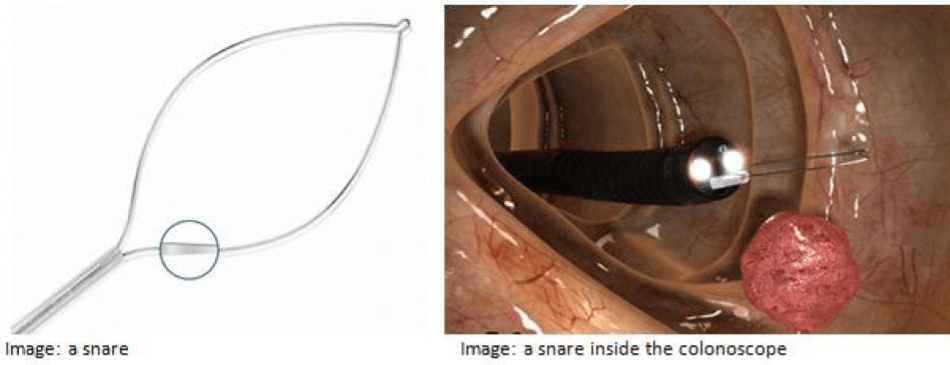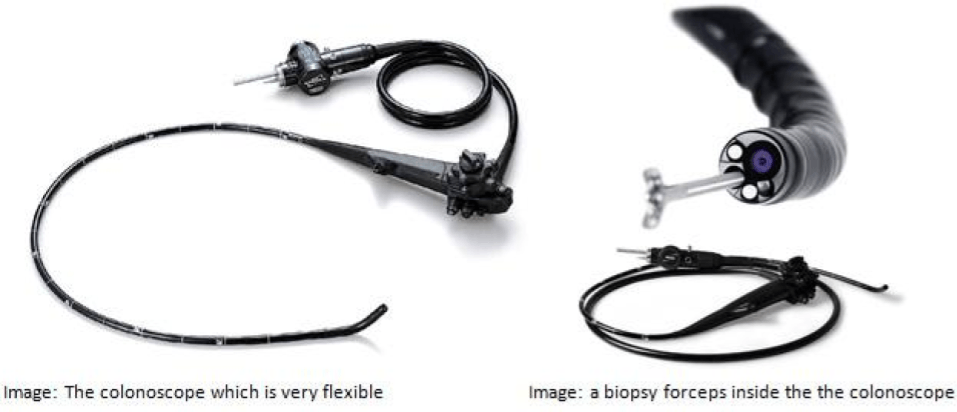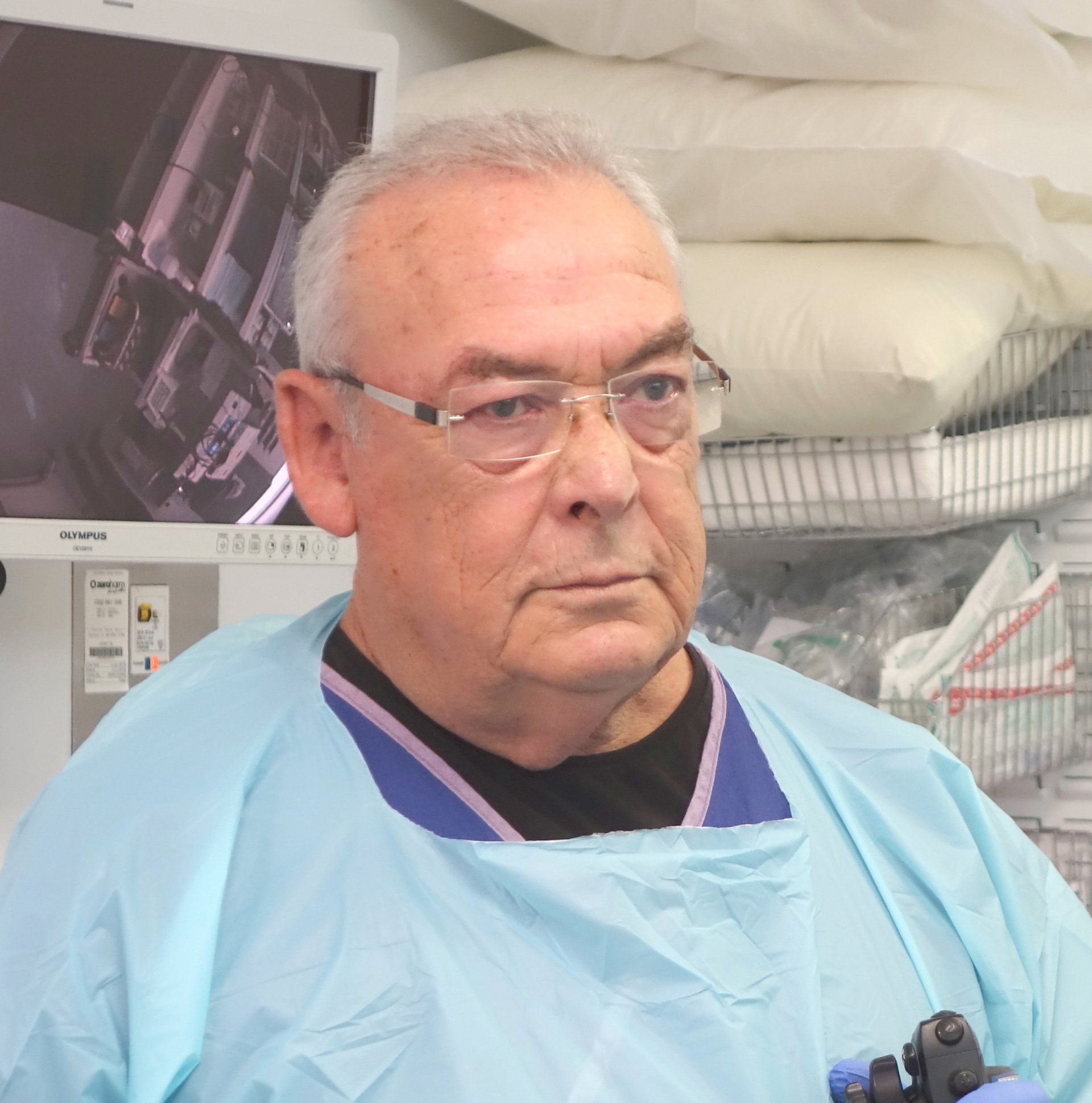Polypectomy
Usually, polypectomy is performed using hysteroscopy. This involves using a long, thin rod with a video camera and light (hysteroscope) being inserted through the rectum.
Then the polyp is held and cut with a small pair of scissors.
Larger polyps need to be operated in a hospital set-up under general anaesthesia.
Removing Polyps and Doing Biopsies
During the course of your colonoscopy, your Gastroenterologists will use air or medical Carbon Dioxide gas to inflate the colon to help see the lumen. If your Gastroenterologist sees a polyp (benign growth) or other abnormalities, he or she may remove it in its entirety or a piece of it if it’s too big to safely be removed with a colonoscope.
The equipment used includes biopsy forceps or a snare. You can see that there is a channel at the tip of the colonoscope. Most colonoscopes have multiple channels — it is through the channels that your Gastroenterologist can utilise the equipment to remove the polyps.
Tissue during the colonoscopy is removed in two general ways:
- Polypectomy:
a tweezer like instrument called forceps or a flexible wire loop called a snare can be passed through the colonoscope to cut out the polyp. Either of these methods can be used “cold” or “hot”. Hot means with the use of cautery or heat to burn the tissue as the polyp is being removed.
- Biopsy: In a biopsy, particularly when the doctor finds a large polyp, he or she removes a small amount of tissue for the lab to examine and determine its microscopic nature. This is called a “biopsy”. When knowing the nature of the polyp, your Gastroenterologist can plan for definitive removal and future treatment.
Why are Polyps or Tissue Sent to the Laboratory?
After removing a polyp, your Gastroenterologist will retrieve and send the tissue to a laboratory to determine the nature of the lesion. Most colon cancer starts as noncancerous polyps. Because the underlying nature of colon polyps can’t be determined without being examined under a microscope by an experienced Histopathologist, most polyps are removed during colonoscopy. The colon doesn’t feel pinching or burning sensations, and as patients are sedated, people don’t feel a polyp being removed. The colon pain receptors do feel the stretching sensation from air distension, but your Gastroenterologist will try to remove most of the air inside the colon (by suctioning) before completing the procedure.
After Removal of Polyps
When a polyp is removed from the lining of the bowel, a small ulcer or sore remains at the removal site, which can be prone to bleed, either immediately or within two weeks (called “delayed bleeding”). If you had polyps removed during your colonoscopy, your Gastroenterologist may specifically request withholding blood-thinning medications or advising against alcohol consumption for a certain number of days. Ask your doctor if he or she wants you to withhold any medications, and when it is safe to resume taking your normal medicines. Some over-the-counter medicines may increase the risks of bleeding post-procedure, and you should ask your Gastroenterologist if you can continue to take them.
Within 30-40 minutes after the procedure or when you are fully awake, your doctor will be able to reassure you; or advise you whether there was something serious or concerning detected on the examination. You will be provided with a written report which contains photos of the large bowel taken during the examination. A copy of the report will be sent to your Family Doctor, either via email or by post on the same day. The majority of individuals undergoing colonoscopy get reassuring news that the examination was normal or that only small polyps were found which had been safely and successfully removed. If your Gastroenterologist is concerned about something found during the examination, the doctor will request you to return – usually within a week or two to discuss the laboratory results.
Waiting for results of biopsies can be unnerving. Be sure you or your family member driving you home gets a chance to review the report of the colonoscopy with your doctor before you leave the endoscopy centre. Knowing whether you have something to be concerned about, or your doctor doesn’t want to see you for 5-10 years will be reassuring. Don’t spend too much time worrying about biopsy results, but be comforted by the fact that you took the proper steps for your health by getting a colonoscopy, and that you will take the proper steps for what happens next. The results may simply show an advanced polyp that may have been caught in time, and if colon cancer does occur, it’s curable when caught early. Doctors continue to discover more about colon cancer and the factors that influence its development, and as you’re finding out, they also have effective screening tools that aid in its prevention.
Dr Donald Walker
Write your caption hereMore
Dr Johan Van Den Bogaerde
Write your caption hereMore
Trusted for more than 25 Years
PANCREAS & BILIARY
Digestion Problems - Dyspepsia











